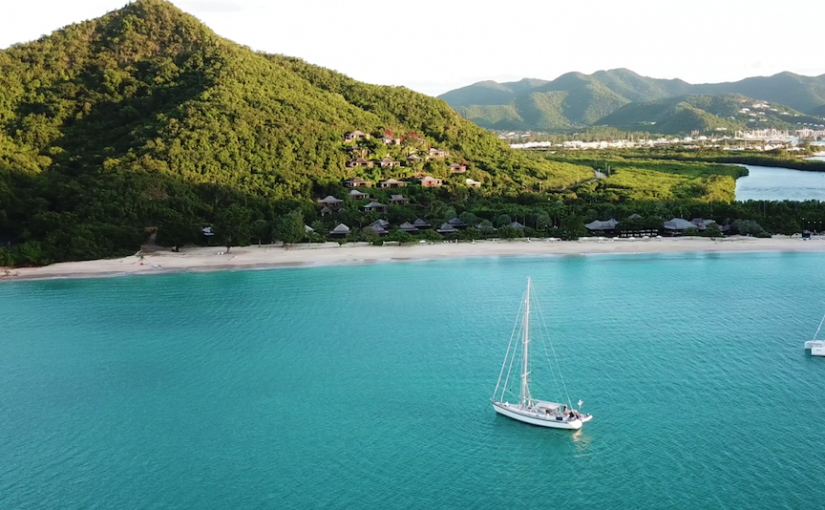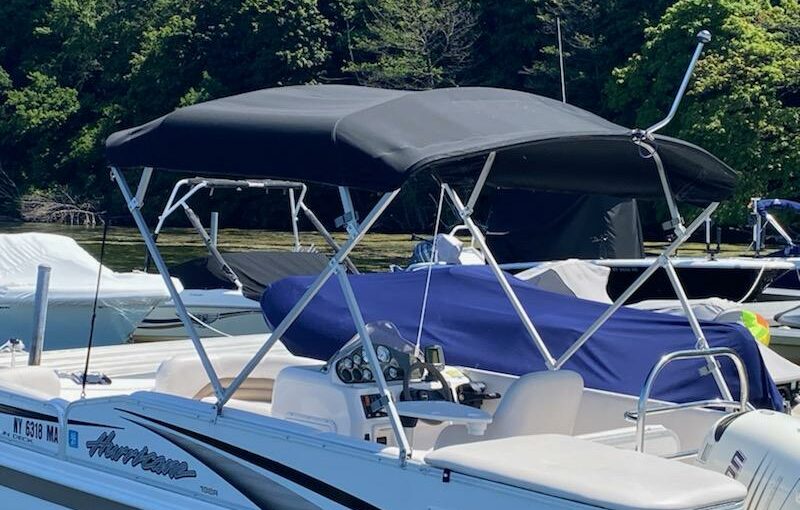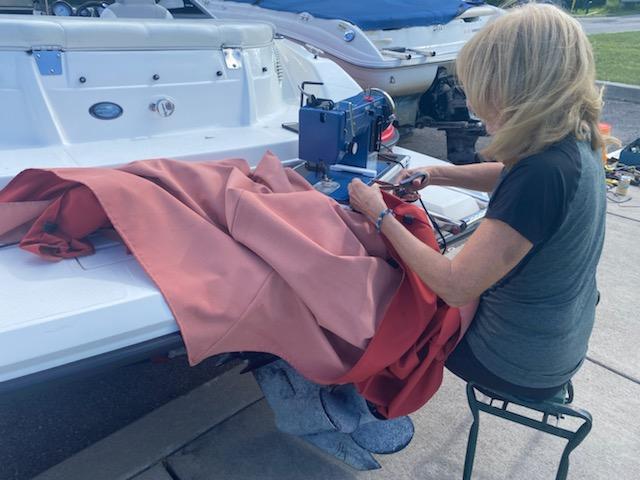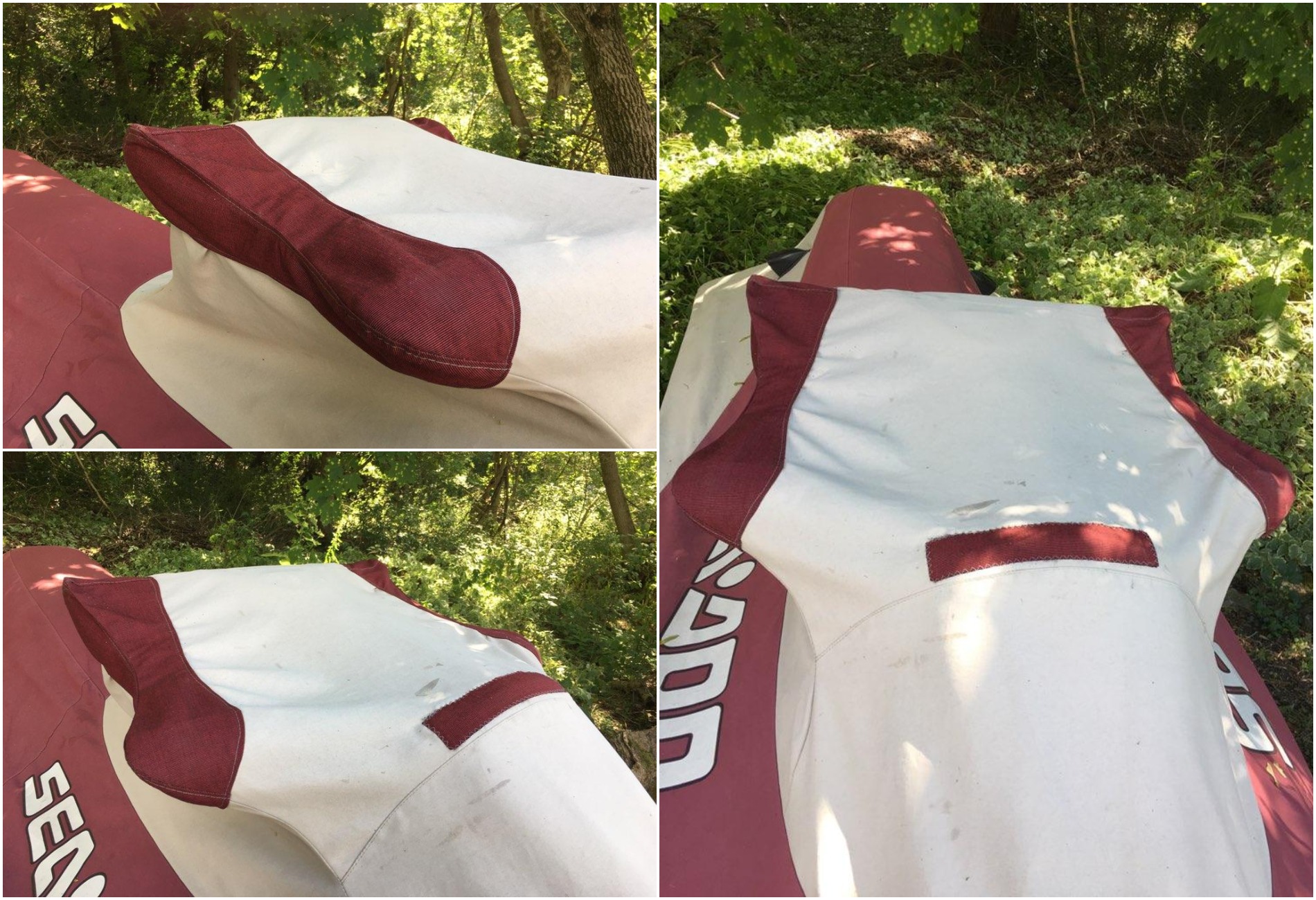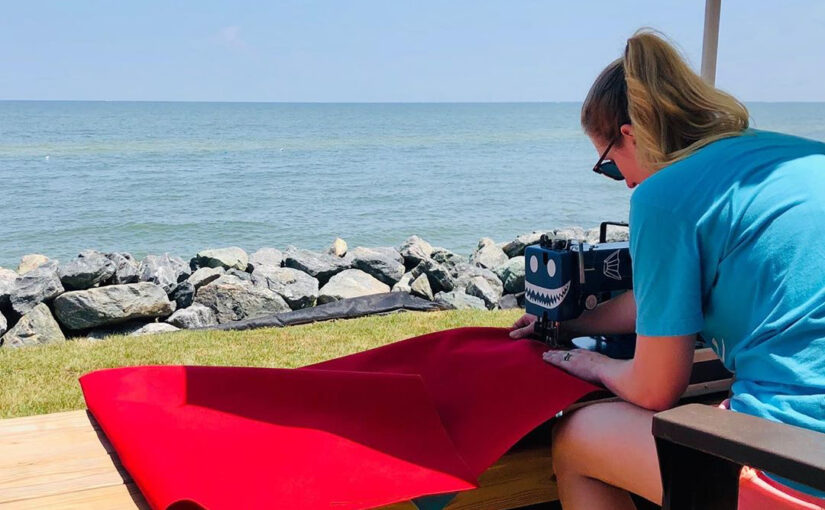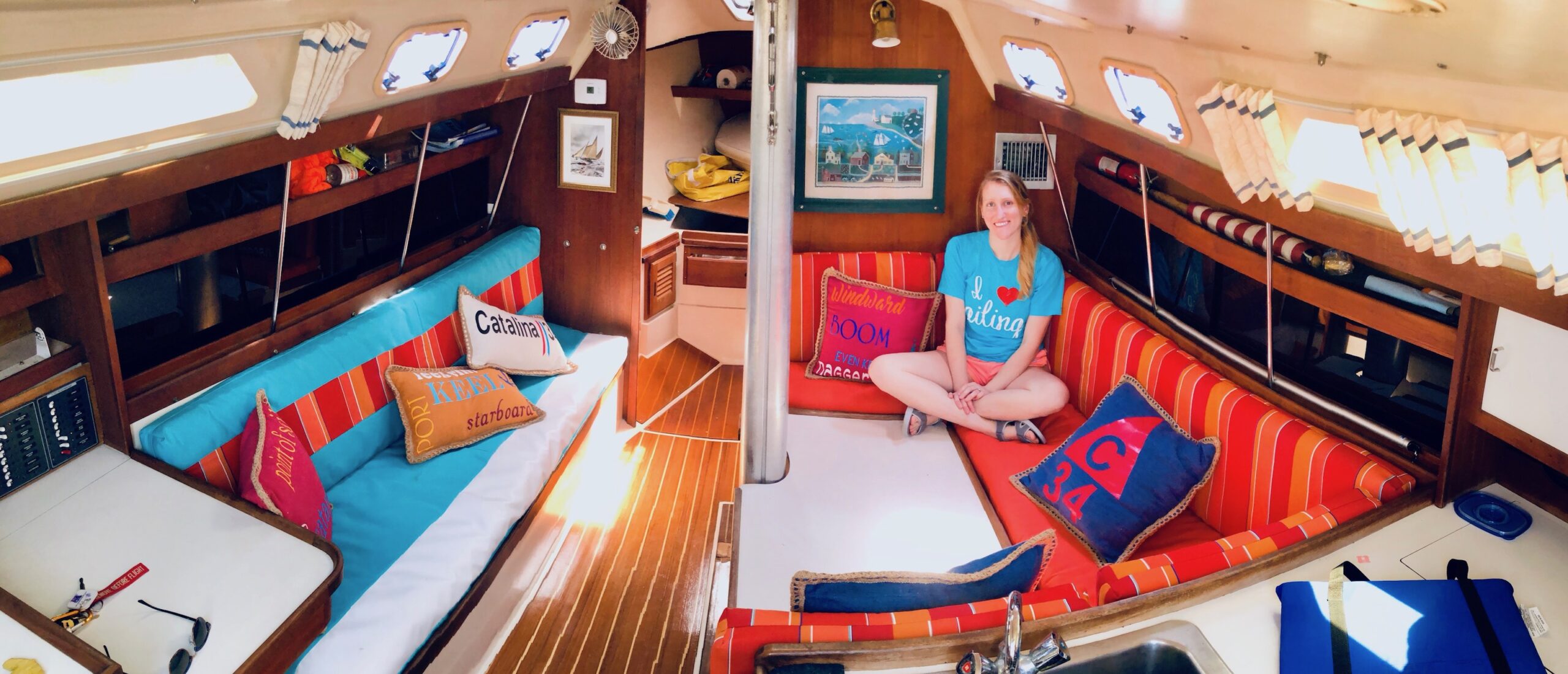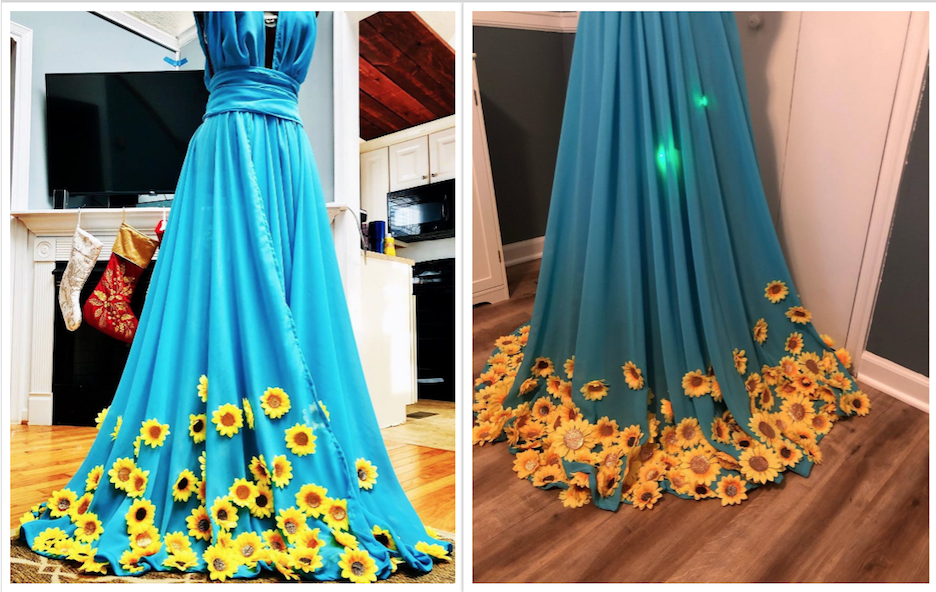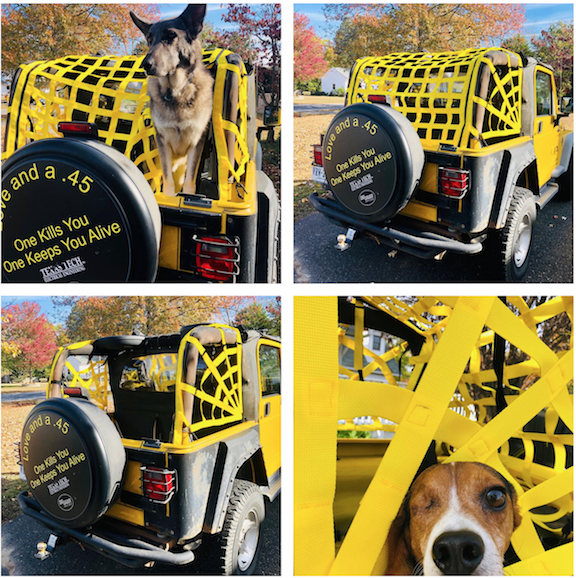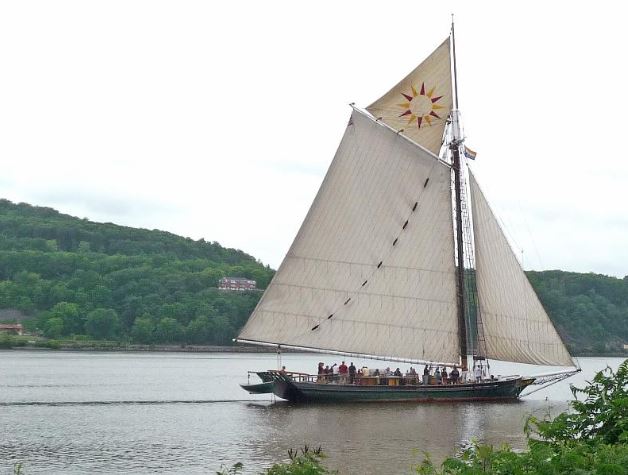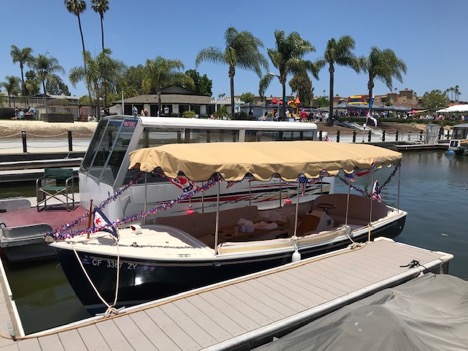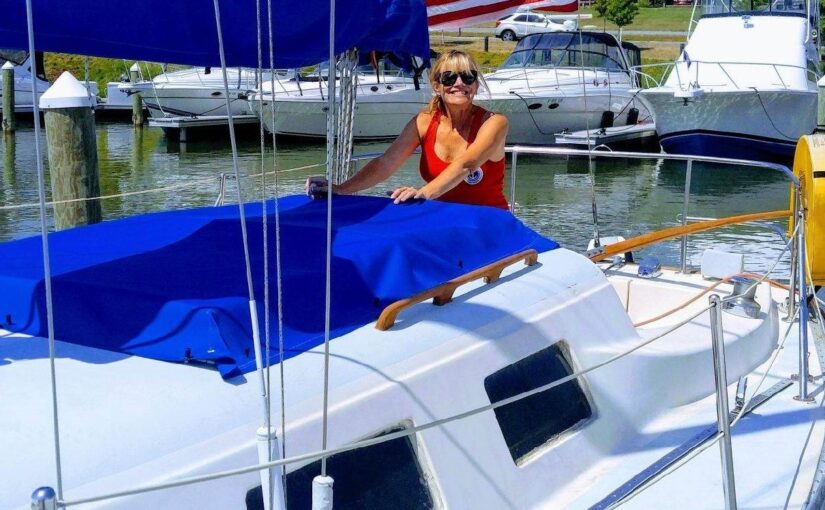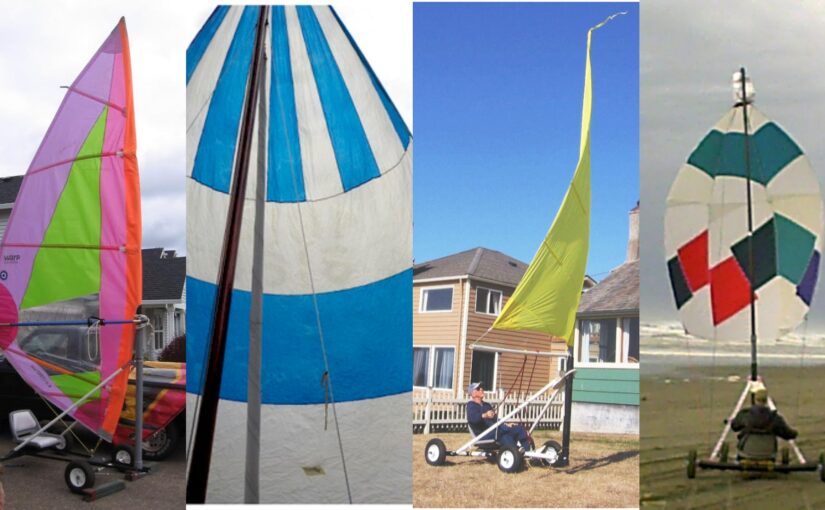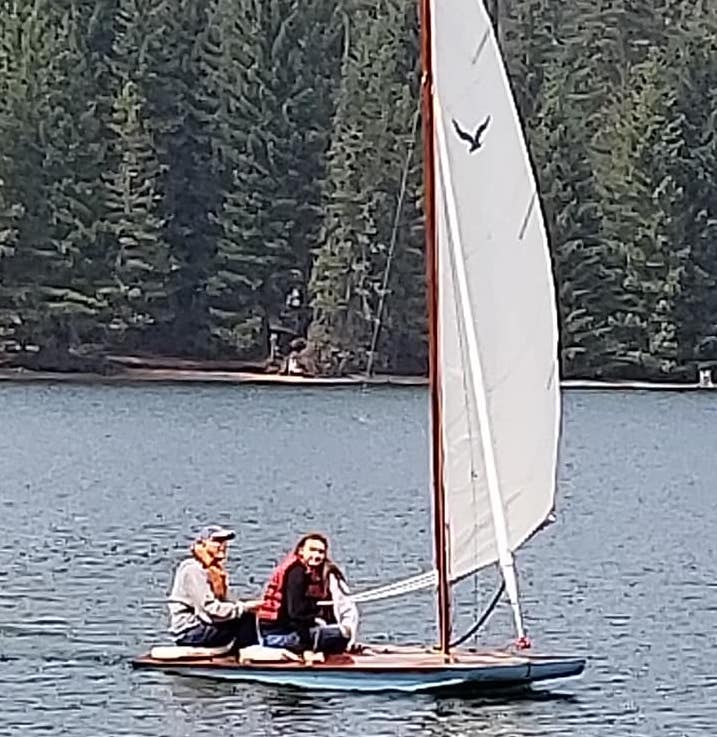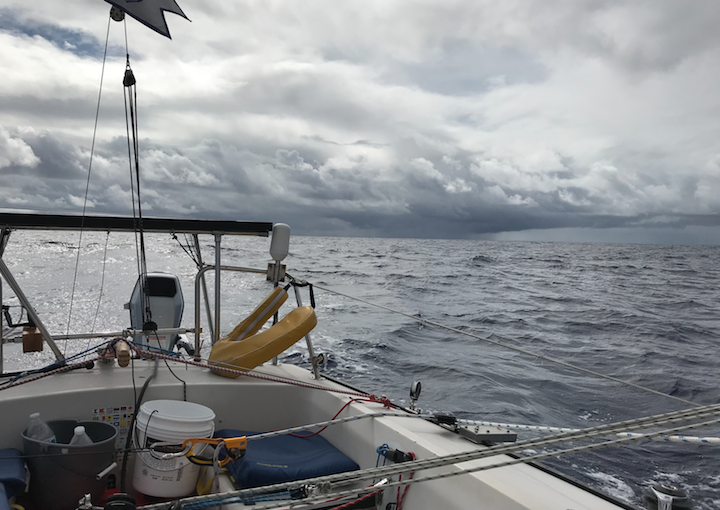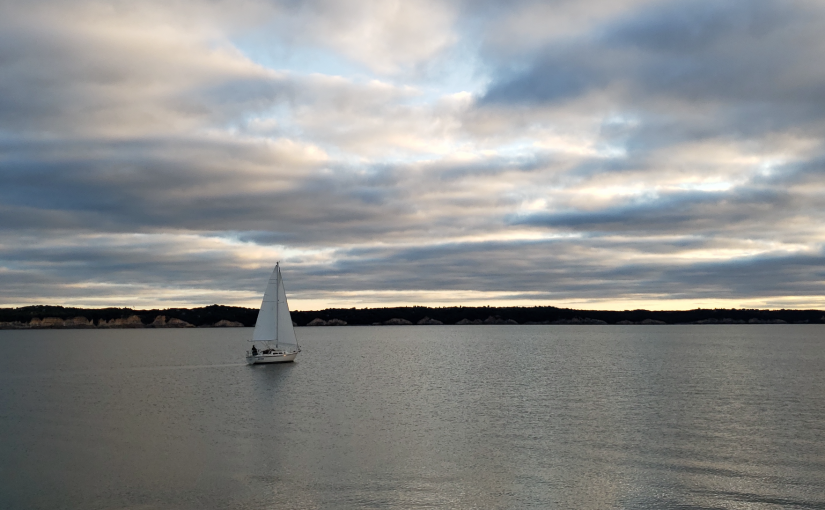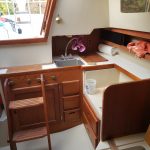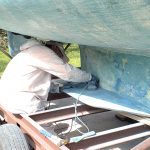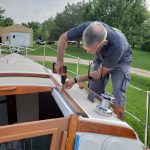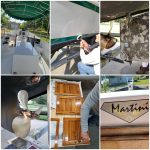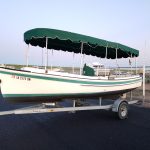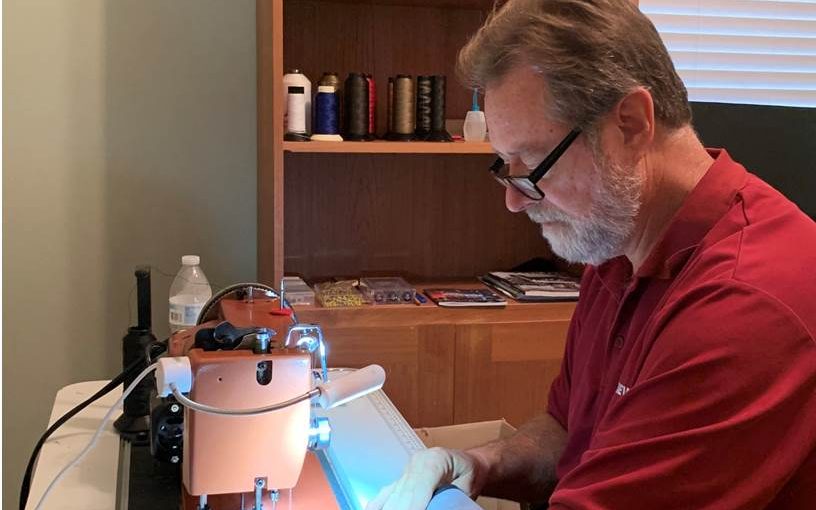For many, the idea of living aboard your boat and sailing the world is simply a pipe dream. It takes a lot of preparation and courage to cut ties with the land and jump into a life at sea. Glen and Oana Sansom decided years ago to devote their lives to sailing and traversing the open water. Along the way, they’ve had incredible adventures and even became acquainted with the Sailrite® Ultrafeed® Sewing Machine.
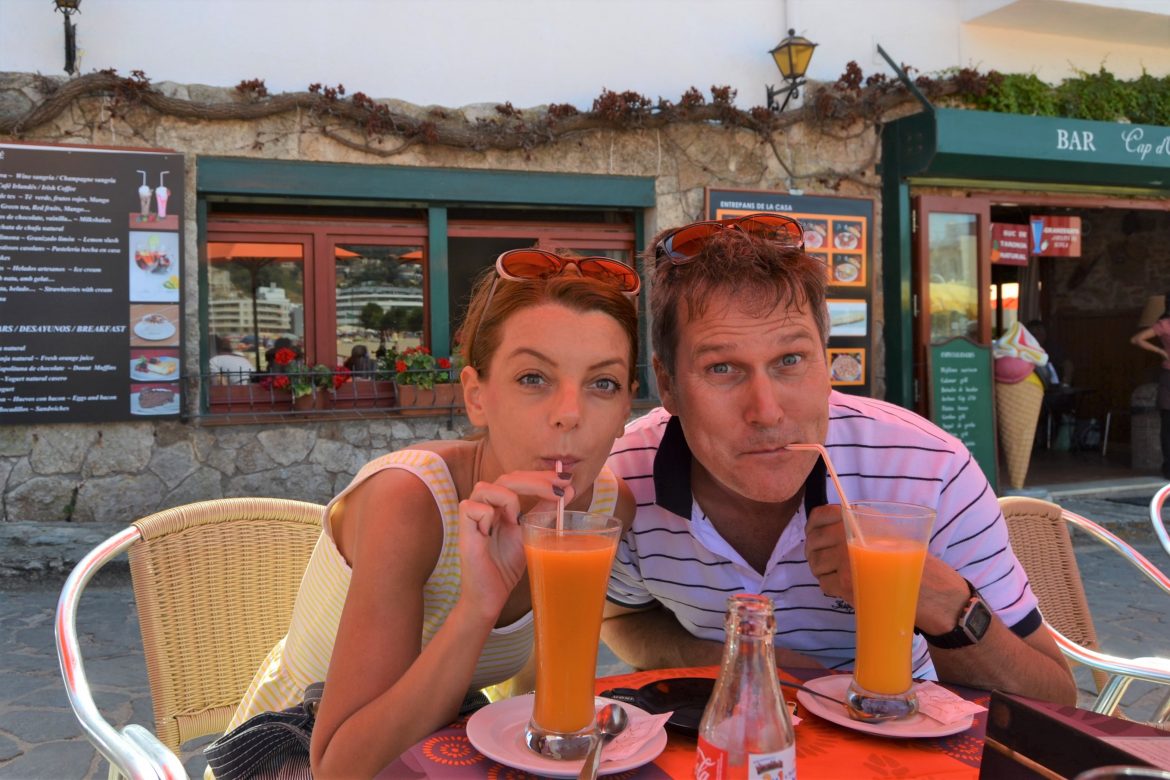
Glen is British and Oana is Romanian. They met in Bucharest while under the employment of the same international oilfield services company. Later, the two moved to Dubai and were married. In early 2016, Glen was offered an early retirement after 31 years in his field and Oana took forced retirement as requested by Glen. Like the old saying goes, when one door closes, another opens! This catalyst prompted the two to reexamine their professional life — the long office hours and material ties. Both adventurers at heart, they decided it was time for a change.
Glen had been a sailing enthusiast in his teen years and Oana had begun sailing while in Dubai where the couple raced a J/22. It only made sense that they jump headfirst into sailing and start cruising exclusively following a trip to the Dusseldorf Boat Show. After months of extensive research, they finally found their dream boat! Enter Cloudy Bay, a Hallberg-Rassy 54 launched in Sweden in 2008. The previous owner had named her after a famous New Zealand wine and it stuck. And so the adventures of Cloudy Bay began!
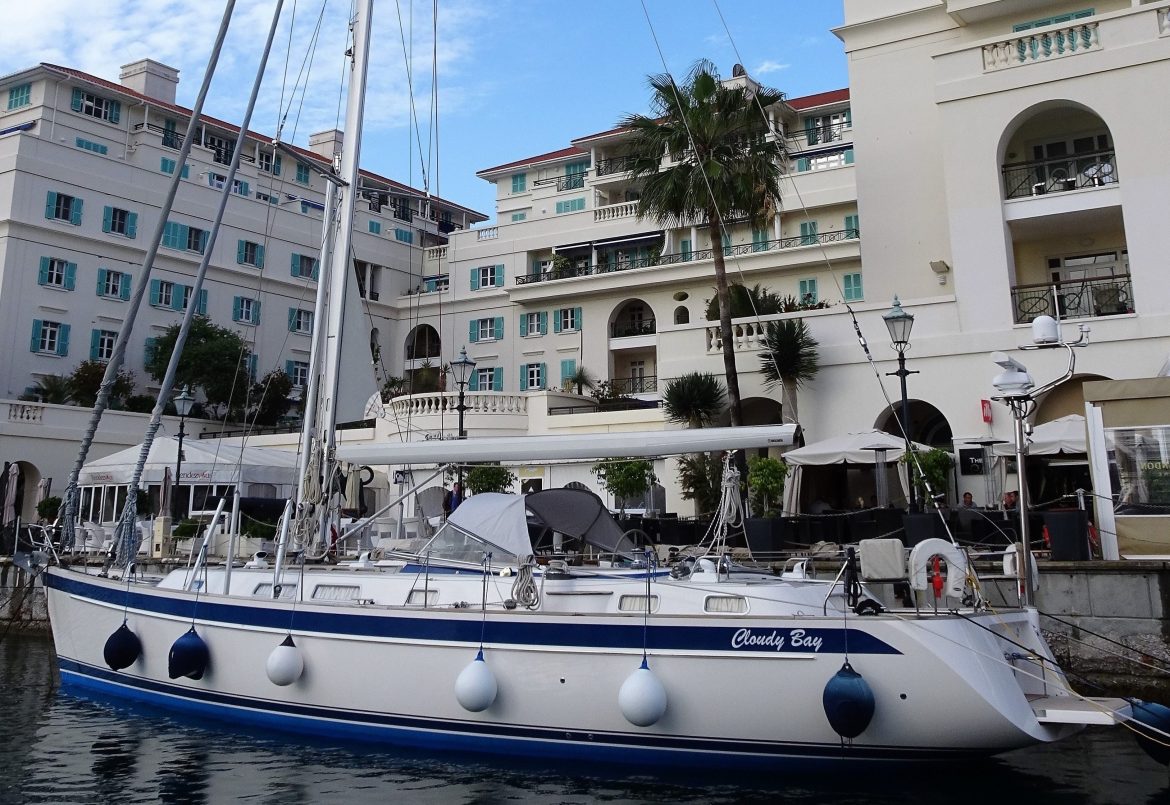
It wasn’t long before Glen and Oana realized that living aboard their boat required a certain level of self-reliance when it came to repairs. If you’re in the middle of the ocean and experience a tear in your sail, you better be ready to fix it! When it came to sewing, Oana was familiar with hand sewing and Glen had done some sewing in the past with his mother’s old Singer. They soon began researching for the ideal machine to have onboard and quickly settled on the Sailrite Ultrafeed LSZ. “When we saw the Sailrite machine at the Annapolis Boat Show, the Ultrafeed was an easy purchase, along with all the materials and little bits needed to complete the projects we had in mind.” It was also critical to have instructional materials, so they quickly began utilizing Sailrite’s how-to videos.
“We started our various projects with the simplest and worked upwards in complexity. Our first project was making fender blankets ready for our transit through the Panama canal. The latest project, and the one we are most proud of, was a set of dinghy chaps. We templated the dinghy using shrink-wrap plastic then transferred the pattern to Sunbrella® material. We put strengthening pieces around all the protruding fittings and secured the chaps to the dinghy using velcro glued to the dinghy. It was the little things that made the difference. For instance, a tip made in Sailrite’s dinghy chaps video was to do the patterning with the dinghy slightly deflated. Then, when we finally fitted the cover and pumped to full pressure, the chaps fit like a glove! Other projects included side and rear sunshades for the bimini, putting six solar panels on top of the bimini and repair work to our aging dodger.”
When you spend all your time sailing, the world is your oyster. After purchasing Cloudy Bay in 2016, the couple cruised the Western Mediterranean. That winter they did a big refit in Spain, making all the necessary changes for circumnavigation. The next summer, they cruised the Eastern Mediterranean, then set off across the Atlantic in early 2018. After that, they visited the Caribbean Windward Islands, spent the summer of 2018 cruising the East Coast of the United States up to Maine, and then went back south again for another winter in the Caribbean. And that’s just the start of their travels! Thankfully, all of their trips have been aptly documented via their blog site, Sail Cloudy Bay, and their YouTube channel of the same name.
When it comes to committing to a floating home, Glen was happy to share some tips for potential cruisers. “First and foremost, it may look like an idyllic lifestyle, but all good things become the norm after a year or more. I would not want to discourage people, but I would say to try it by doing a charter or two before you commit too much. Don’t spend years preparing and spending, only to find it’s not for you. Of course, if you love independence, remote off-grid living and sailing, it’s a perfect life if you both like it. But if one partner enjoys it more than the other, there has to be some empathy and compromise.”
“Our compromise is to spend at least four months a year back at home, Oana’s home in Romania. Behind all the apparent fun and adventure, consider these points: the incessant movement of the boat, always getting wet when going ashore with the dinghy, needing to constantly be aware of the weather forecast, knowing that almost every day something will break, and that never-ending nomadic feeling of always being on the move. I would recommend always keeping a home somewhere other than the boat. Because you will want a break from it sometimes, and there is no place like home when that time comes. Another key piece of advice is above having a good seaworthy boat, it needs many of the home comforts too if you are to live on it 24/7/365. Otherwise, it’s like the difference between camping and glamping. And whatever the luxury of your boat, it’s never going to be up to living in a roomy, warm, dry, stationary house!”
Since their foray into the world of boating, Glen and Oana have been happy to share their experiences via their blog, social media and their YouTube channel. While they initially started documenting their experiences on video for family and friends, it quickly grew into a popular channel with over 16,000 subscribers. Their goal is to show real sailing and share cruising wisdom with their fans. They even filmed a video dedicated to their Sailrite projects!
While traversing the globe has its own set of challenges, Glen and Oana have also had to manage the global COVID-19 pandemic. For a cruiser, this poses its own unique set of hurdles. Glen was kind enough to share his experience with us.
“For Oana it’s wonderful! She gets to have a longer break back at home with friends and family. Unfortunately, she suffers from seasickness, so six months at a time onboard is about her limit. Frankly, COVID has stopped us, and many like us, in our tracks. We should be halfway across the Pacific by now. Even restarting again this November looks unlikely. Most of the countries we need to enter either still have their borders closed or apply highly restricted movement. Add to that, we need to look at if/when we catch COVID ourselves, what is the probability that one of us would need hospitalization. Currently looks like about a 14% chance given our ages. That may be okay at home, where good hospital care is available, but those odds feel too high to venture to places where no hospital care, or limited care, is available. In summary, it looks like COVID will cause us to have a break, but things will get back to normal and it will prolong our adventure, which is a good thing (for me).”

While current circumstances may seem daunting, this intrepid pair of adventurers isn’t letting anything keep them from enjoying life on the water. As soon as they’re able, they’re determined to continue their circumnavigation. When they do set off, they’ll be heading for Panama to start the Pacific crossing. Once across the Pacific and its many islands, they hope to spend some time exploring New Zealand. After that, there will be a trek to Southeast Asia, the islands of the Indian Ocean, the final leg up to Brazil and a trip to the Chesapeake Bay on the East Coast of the United States.
The cruising lifestyle isn’t for everyone, but if you can make it work it’s full of exciting adventures and countless lessons to learn. Self-reliance is key, and Sailrite is here to help you every step of the way. From our instructional videos to top-of-the-line sewing machines, you’ll have everything you need to excel. Glen and Oana are perfect examples of the ingenuity, tenacity and lifelong curiosity that makes for a worthwhile life at sea. Thanks for sharing your story with us, and we look forward to hearing more about the voyages of Cloudy Bay!
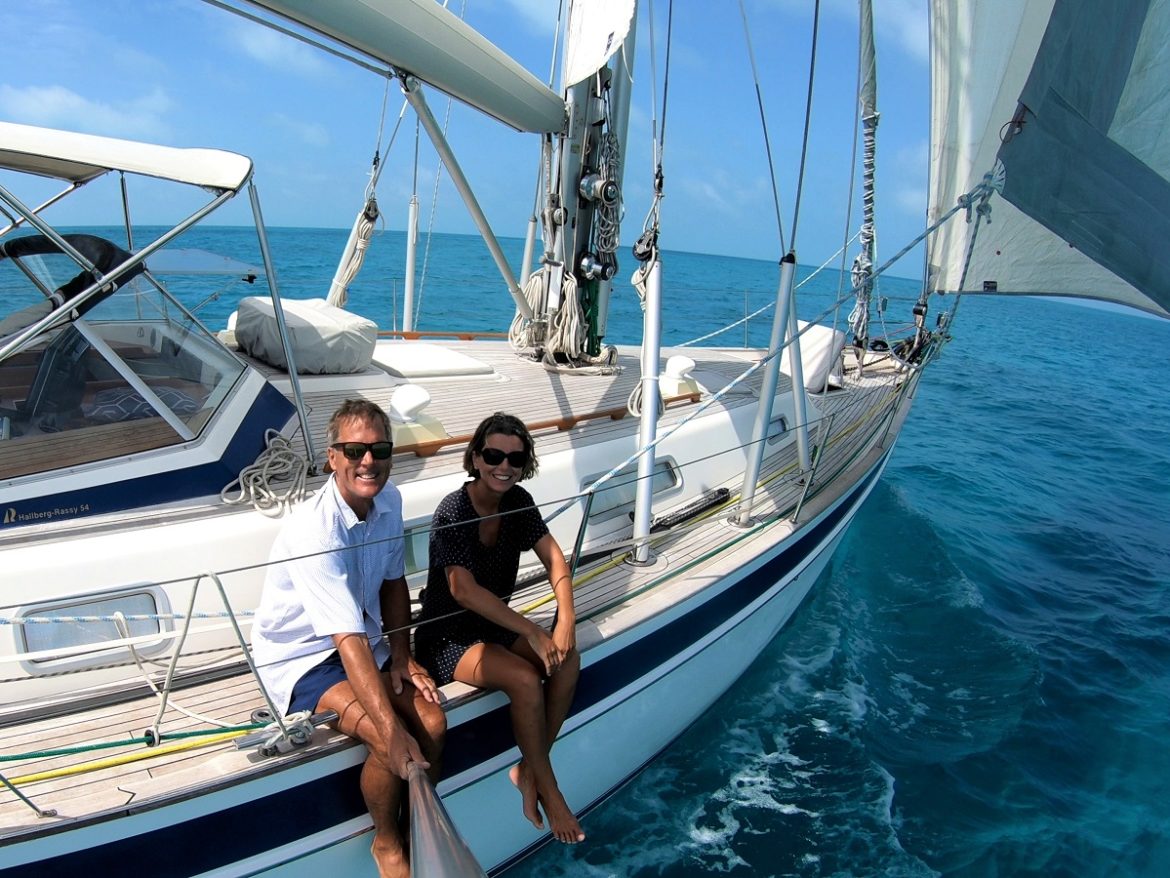
Who We Are
Sailrite is your one-stop DIY shop! We are a passionate crew of do-it-yourselfers who strive to equip you with the supplies and how-to knowledge you need to tackle your next project. Do you want to learn upholstery, leatherwork, canvaswork, hobby sewing, bag making or more? We have the fabric, tools, hardware, sewing machines and notions you need to master any DIY. And even if you’ve never sewn before, our tutorials and how-to videos are designed for beginners and experienced crafters alike.
Start your DIY journey today: www.sailrite.com

